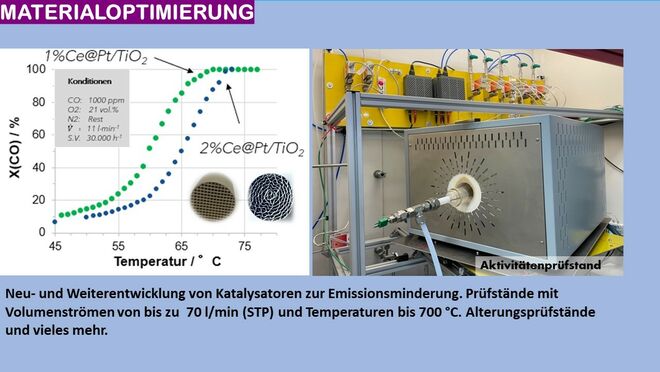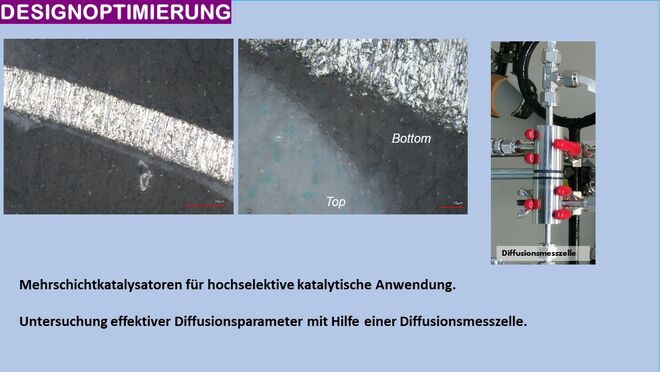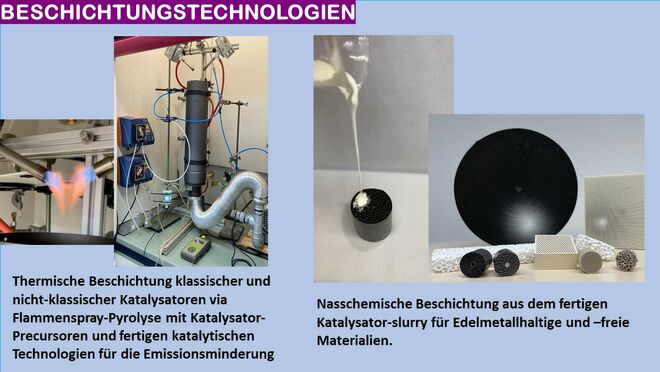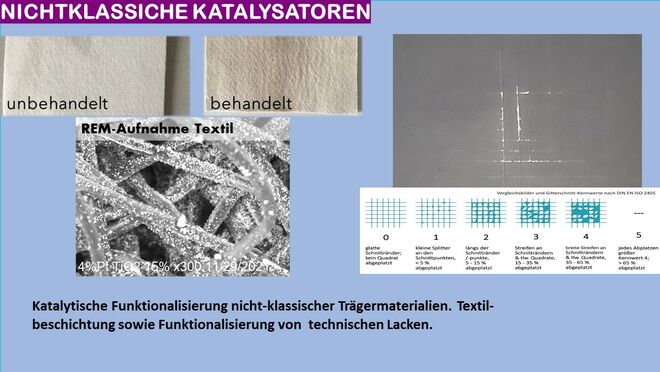Lectures
Math I for Sciencer
Reaction Engineering I
Reaction Engineering II
Catalysis
Surface Analysis
Sustainability in industrial chemistry
Physical Chemistry I
internships
Physical Chemistry
Reaction Engineering I
Advanced practical course

Lectures
Math I for Sciencer
Reaction Engineering I
Reaction Engineering II
Catalysis
Surface Analysis
Sustainability in industrial chemistry
Physical Chemistry I
internships
Physical Chemistry
Reaction Engineering I
Advanced practical course
Topics for degree or project assignments will be assigned at any time for the following specialisations:
- Heterogeneous Catalysis
- Reaction Engineering
- Sustainability in industrial chemistry
selected examples:
1. development of precious metal-minimized catalysts for emission reduction
2. development of exhaust gas catalysts based on renewable raw materials
3. development of catalytic evaporators
4. development and design of dual-layer catalysts for selective oxidation reactions
5. technical evaluation of microreactors and micromixers for use in synthesis and process design
6. development of a photoreactor for gas phase oxidation
7. development of an IR transmission cell for measurements at T > 350 °C
Professional career
since 09/2020 Professor for Technical Chemistry at The Hochschule Niederrhein
08/2019 - 07/2020 Development engineer at Altenburger Maschinen Jäckering GmbH
06/2017 - 07/2019 Head of R&D at Emission Partner GmbH & Co. KG
04/2013 - 03/2017 Research group leader exhaust gas aftertreatment at TU Freiberg




Adlerstr. 32
by arrangement

Looking for the right counseling center? Our counseling navigator will help you find it.